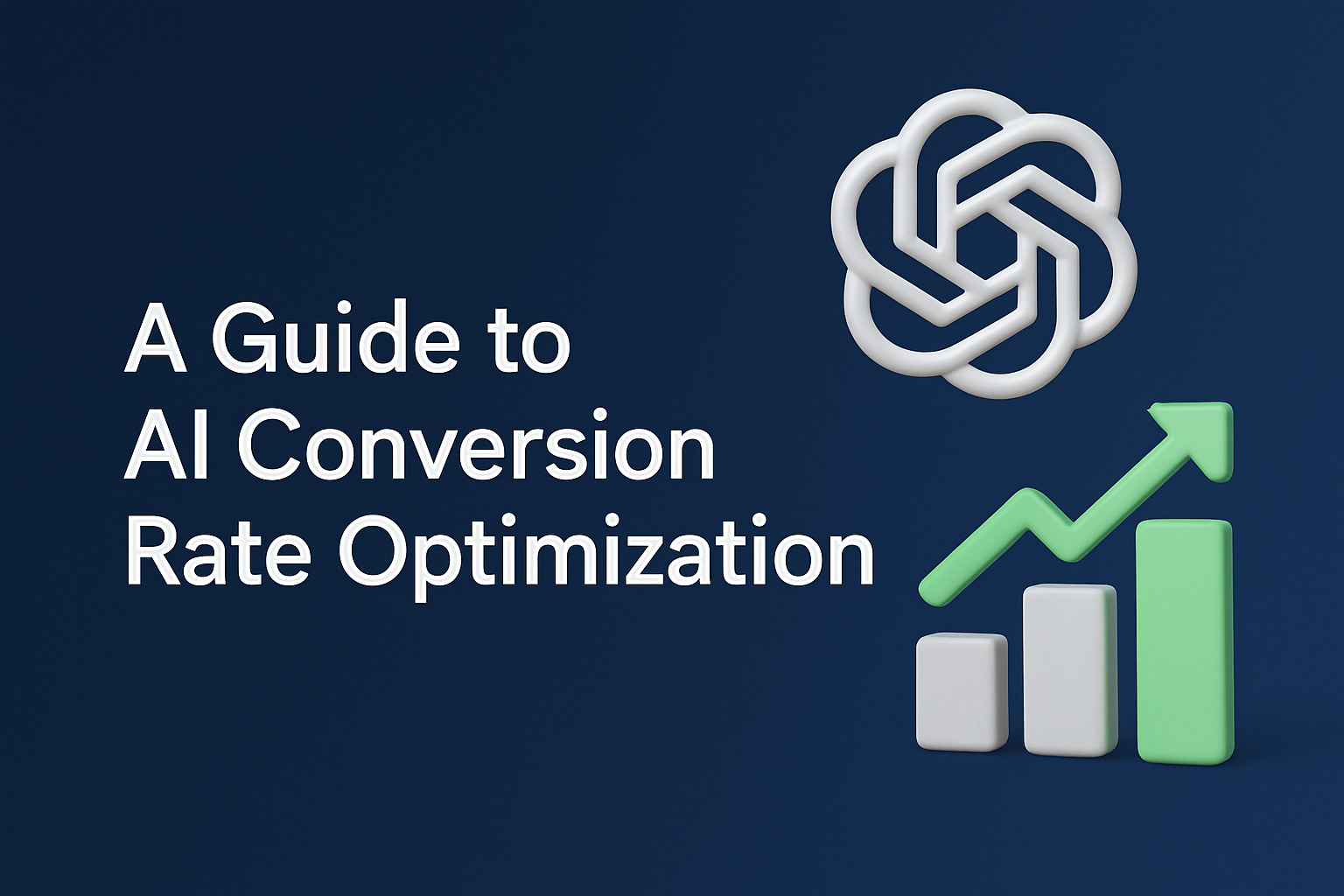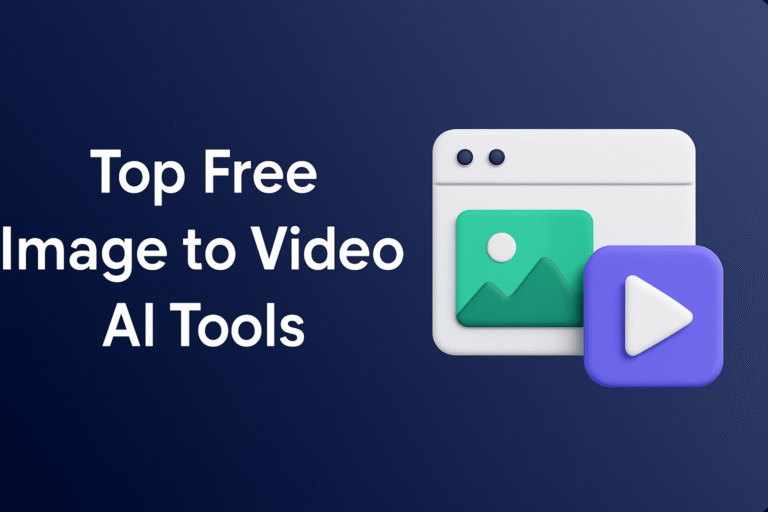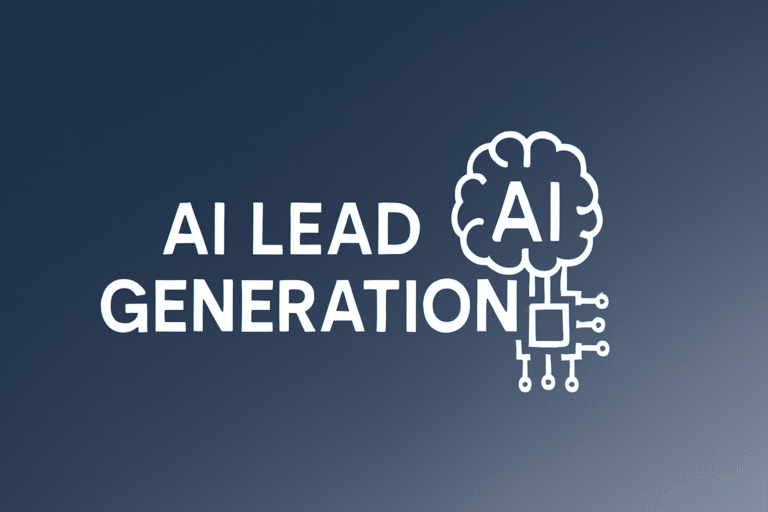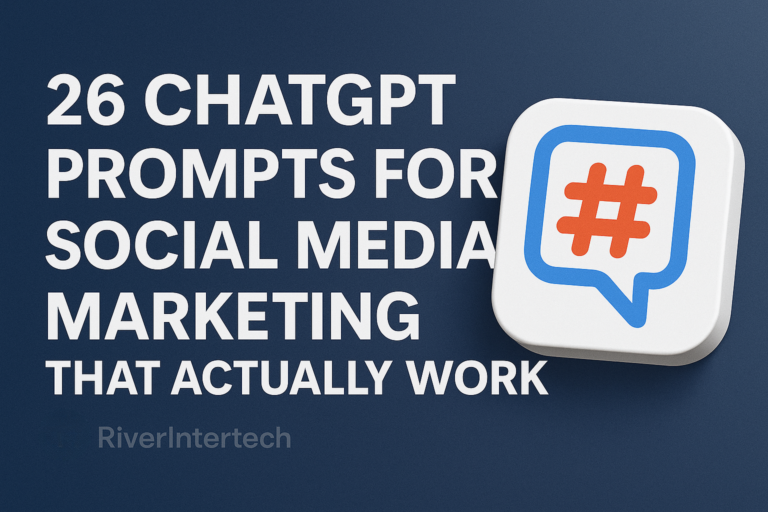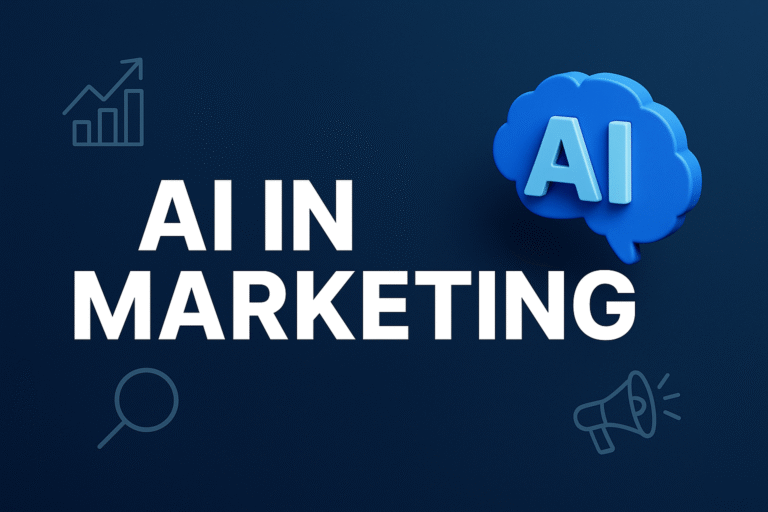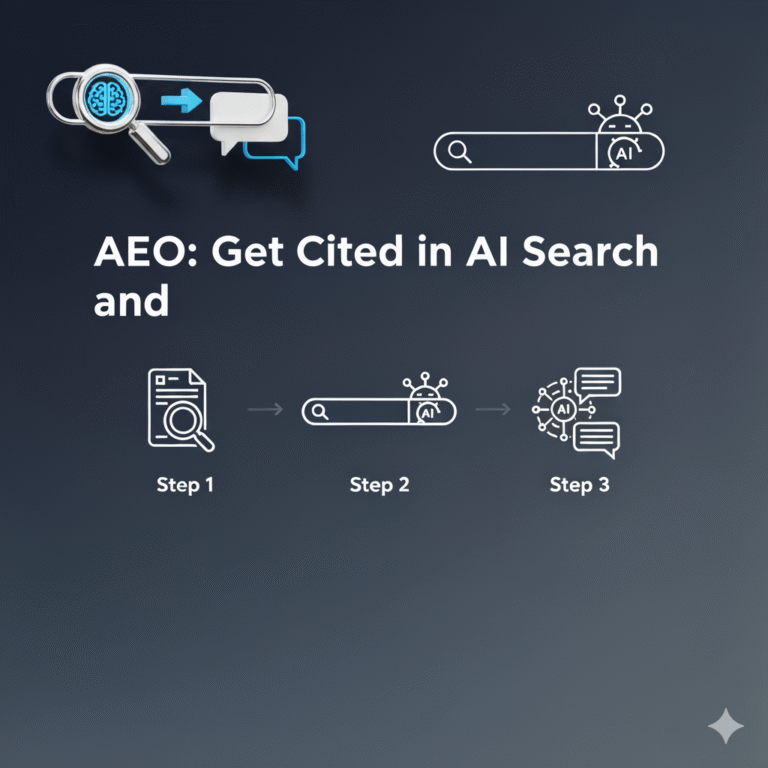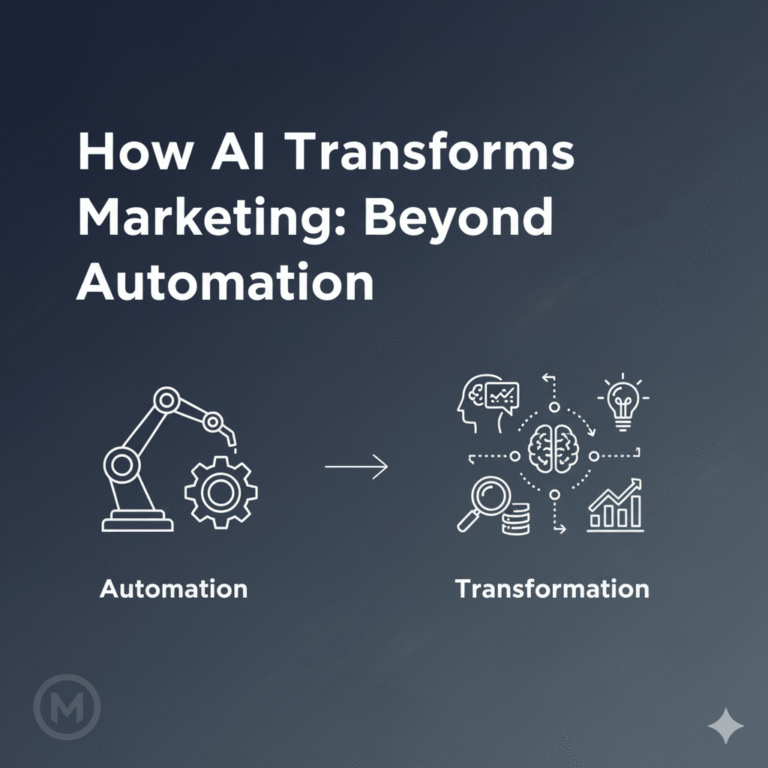A Guide To AI Conversion Rate Optimization: Getting the Highest ROI
AI won’t replace marketers—but marketers who use AI will outperform those who don’t. Nowhere is that more obvious than in Conversion Rate Optimization (CRO). Traditionally, CRO has been a slow, reactive process built on guesswork and spreadsheets. But AI flips that model.
With intelligent automation, AI identifies user behavior patterns, personalizes experiences in real time, and adapts continuously—turning more of your existing traffic into actual results on your most critical asset: your landing page.
Think about that for a moment. You’ve already paid for the click. AI helps ensure that traffic doesn’t go to waste. It finds what’s broken, tests faster than humans ever could, and optimizes based on real-time learning.
Whether you’re improving lead generation, product sales, or SaaS trial signups, AI is the tool that makes your existing strategy smarter. Not louder. Not riskier. Smarter. If your current CRO efforts feel slow, manual, or uncertain—AI is how you catch up, then lead.
What Is AI Conversion Rate Optimization?
AI Conversion Rate Optimization is the use of machine learning and predictive analytics to improve the percentage of users who complete a desired action—like signing up, clicking, buying, or booking. It doesn’t just automate the optimization process. It improves it. AI can analyze user behavior across devices, predict the next best action, and dynamically adjust content or layout based on that user’s intent.
While traditional CRO might test one variation at a time, AI tests hundreds of combinations and adapts in real time. It can also uncover friction points that would take human analysts weeks to find—like where users hover but don’t click, or what parts of a form cause abandonment. And with predictive capabilities, AI doesn’t just report on what did work—it forecasts what will.
In practice, this means every visitor sees a version of your website or landing page that’s more likely to convert—without you needing to guess, check, or wait.
Why CRO Matters More Than Ever
Digital ad costs keep rising. Organic reach continues to shrink. And competition for attention is fiercer than ever. In that environment, more traffic doesn’t guarantee more business. But better conversion rates do. That’s why CRO is no longer an optimization task—it’s a core growth strategy.
Every percentage point of improvement has a compounding impact across your funnel. If you convert 2% of visitors today and increase that to 4%, that’s not a 2% gain—it’s a 100% revenue lift from the same traffic. That shift improves your Return on Ad Spend (ROAS), reduces Customer Acquisition Cost (CAC), and improves profitability without increasing spend.
CRO also affects SEO. Engaged users reduce bounce rate, stay longer, and interact more—signals that search engines interpret as quality. Better CRO means better performance across both paid and organic channels. In a landscape where attention is expensive and results must be earned, CRO gives your landing site the power to do more with every visit.
How AI CRO Tools Stretch Your Marketing Budget
Most marketers focus on getting more traffic. AI-powered CRO shifts the focus to doing more with the traffic you already have. That alone changes the math of your entire marketing budget. You’re not pouring more money into acquisition—you’re increasing the value of each visitor who lands on your landing page for lead generation.
AI tools help you identify the best opportunities fast. They process data from heatmaps, user paths, device types, locations, and behaviors in real time. Instead of spending days analyzing sessions or guessing why users bounce, AI shows you where they hesitate and what would likely make them convert.
This allows teams to optimize campaigns on a granular level—improving copy, layout, forms, images, and CTAs—while letting AI monitor performance across variations. For small teams, that’s like adding 10 data analysts and a full-time UX designer. For large teams, it’s how you scale insights across hundreds of pages. Either way, AI makes your budget work smarter.
A Step-by-Step Process to Apply AI-Powered CRO
Getting started with AI-driven CRO doesn’t have to be overwhelming. The process works best when approached with structure. Start by defining your primary conversion goal—signups, purchases, demo bookings, or content downloads. Once that’s locked in, gather historical data on how users currently behave.
From there, use AI tools to map patterns. Where are users dropping off? What device types convert better? Which buttons get ignored? These questions fuel your landing page optimization strategy. Next, create hypotheses for improvement—like “removing one form field will increase completion rates.” AI tools can simulate outcomes, predict lift, and dynamically test those changes in real time.
Unlike manual A/B testing, AI continuously adapts to user behavior. It automatically routes more traffic to the highest-performing version and learns as more data comes in. The result: you’re not just testing—you’re optimizing on autopilot, with every visitor making your landing page smarter.
This process compounds quickly, driving long-term improvement without the traditional delay.
How to Measure the Value of Your CRO Efforts
To prove the value of your AI-powered CRO efforts, you need to track the right metrics—not just vanity ones. Start with Conversion Rate, of course, but go deeper. Track Revenue Per Visitor (RPV) to measure output. Monitor Customer Acquisition Cost (CAC) to assess efficiency. And watch Time to Conversion to see if users act faster.
Other critical metrics include Cart Abandonment Rate, especially for eCommerce, and Return on Ad Spend (ROAS) for paid campaigns. These KPIs tie CRO improvements directly to financial outcomes. The faster you can show stakeholders that optimizations are leading to real revenue increases or cost reductions, the more buy-in you’ll get.
AI tools also make it easier to attribute which change made the biggest difference. That attribution helps you scale what works and kill what doesn’t—without waiting weeks for analysis. Over time, this lets you build a library of what your audience responds to best—turning every experiment into a landing page example you can reuse.
The Pros and Cons of AI CRO Tools
AI tools offer clear advantages: speed, scale, and deeper insights. They automate testing, personalize content, and identify bottlenecks humans might miss. They’re ideal for high-traffic websites, fast-moving campaigns, and businesses that want to iterate quickly.
But they’re not a silver bullet. AI tools need clean data to work well. Feed them inaccurate or incomplete analytics, and their recommendations fall apart. They also carry a learning curve. Teams need time to onboard, configure, and interpret results. Some tools are expensive, and not all are worth the price tag depending on your business size.
There’s also a creative risk. AI can recommend what converts fastest—but not necessarily what aligns with your brand. That’s where human oversight is critical. The best outcomes happen when marketers use AI to guide decisions, not make them. Think of it as collaboration, not replacement. It’s your strategy. AI is the co-pilot.
Why AI CRO Still Needs a Human Touch
AI sees patterns. Humans understand people. That distinction matters. AI might know that a red CTA button performs 9% better than blue—but only a human can decide whether red fits your brand, your tone, and your values.
Humans also ask better questions. AI can suggest optimizations, but it can’t decide what truly matters to your audience. You know what motivates them. You understand their fears, desires, and emotions. That’s the difference between improving numbers and deepening trust.
Human insight is what ensures your landing page for lead generation feels cohesive, empathetic, and credible. AI can tell you where someone drops off. A person can understand why.
In the end, AI works best when paired with strategic thinking, brand storytelling, and real empathy. The combination of automation and insight is what makes modern CRO powerful. Data helps you move fast. Human creativity helps you move right.
AI CRO as a Competitive Advantage
AI-CRO isn’t just a marketing tactic. It’s a competitive edge. In a world where acquisition costs are rising and customer expectations are high, your ability to convert matters more than ever. AI helps you turn data into decisions, speed up experimentation, and personalize experiences at scale—without adding headcount.
But the real value is in how it compounds. Every conversion win boosts ROI. Every experiment refines your message. Over time, your landing site doesn’t just improve—it becomes a high-performing asset that adapts with your audience.
If you’re still optimizing manually, you’re behind. But if you start now, you’re still early enough to leap ahead. Use AI to sharpen your instincts, guide your actions, and scale your results. Your traffic already paid for the click. Make sure it pays off.

